5 Steps to Simplify Your Sermon Prep When You Get "Lifed!"
My husband coined this phrase that has become part of the Backstory Preaching lexicon: "I got 'lifed!'"
We get lifed when the week goes awry and we get squished by surprises:
There's an unexpected death...or two...in the family or parish
The parish administrator is suddenly out of commission before Sunday bulletins are printed, and we can't remember that computer's password.
A big summer thunderstorm reveals the leak in the Christian Ed. building you didn't know was there, and programs start next week.
That's getting "lifed."
One summer stands out for me when I got lifed especially hard.
The ride I had arranged for my kids to get to a church choral camp—an eight hours' drive from home—fell through.
Hours of texts and emails later, the only option was to drive them myself.
While the bonus time with my teenaged sons was a gift, I was already way behind on the week's tight deadlines—and the drive only put me further behind.
Years later, I still feel the stress in my body!
In these circumstances, how can a preacher shorten the sermon prep process while keeping the integrity of the process intact?
1. Limit Your Choices
With several texts to choose from and multiple angles possible for each one, it's easy to get sucked into time's black hole of making a decision.
To avoid analysis paralysis:
Prayerfully and slowly read the texts three times.
Note what grabs your attention most. That's what your preaching on! No further decision needed.
Limit your sermon prep to only that portion of the text.
Use the rest of the texts as support.
2. Discover the Good News in your Chosen passage
Though there may be multiple angles of interest in your chosen text, this isn't the week for in-depth research or hours of reflection.
Do yourself a favor and look directly for the bottom line: the Good News.
How?
Start a timer for ten minutes and free-write or create a mind map for the portion of the text you selected.
At the end of the ten minutes, reflect on what you have.
Underline the most important words or phrases.
Summarize in one complete sentence: What's the Good News?
3. Tell a Story
You've discovered the Good News for this passage. Now it's time to bring that truth to life through story.
Stories help connect heady themes or concepts to the emotions that make these ideas "stick."
Use anecdotes from your own life, stories from culture or history, or even fictional narratives from movies, books, or music. Consider:
How do you know the Good News is true and real? How have you or others experienced or witnessed it? Jot some notes.
Based on that, how would you explain to someone else that the Good News is real? Make notes.
Decide whether telling the story from first, second, or third person point of view makes the most sense.
Outline that story's beginning, middle, and end.
4. provide Context
A story dropped into your sermon cold may leave your listeners confused.
What do listeners need to know about the story's setting, characters, personalities, social norms, cultural flash points, etc. in order to understand the story's meaning and relevance?
Provide that context, both for the Scripture passage and the illustration you've chosen.
Imagine telling someone that story. What context do they need to get "into" it?
Make notes or an outline: this is your story's introduction.
5. Put it together
Once you've defined these ideas, you can put the pieces together into a coherent sermon.
Start with the context, or introduction to the story.
Tell the story.
Connect the story to the Scripture passage.
Conclude with the Good News.
You now have the "bones" of a sermon with Good News you believe.
The sermon has an introduction, body, and conclusion.
The story has a beginning, middle, and end.
The sermon’s last line is the Good News people can take with them.
Those are the essentials for any sermon, and it’s what I do when I preach in a week when I get life’d.
We can trust that the Good News we and the Spirit discern and offer is plenty for our listeners to be fed.

